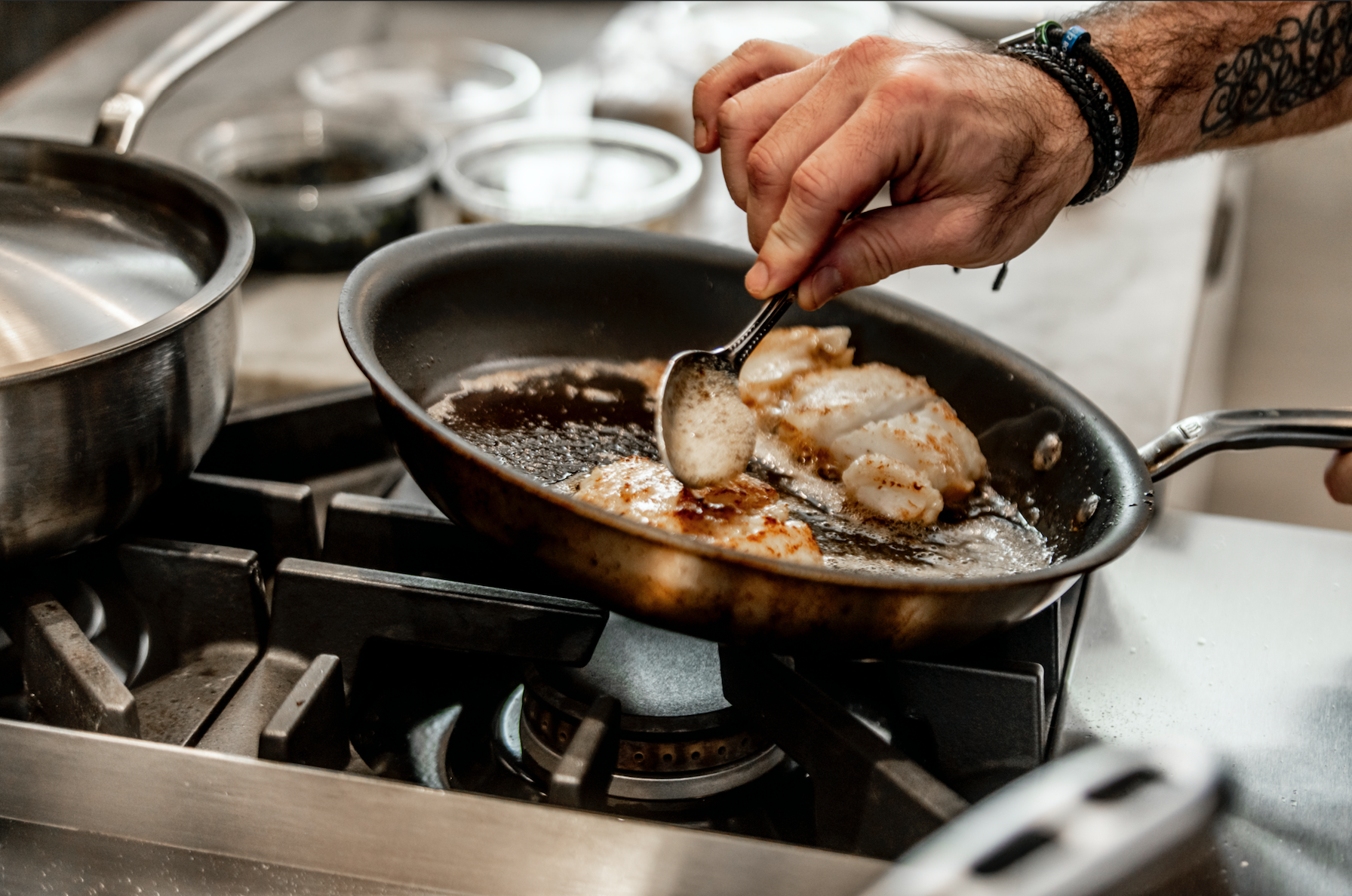What Kind of Pans Do You Use? A Chef’s Guide to Building Your Cookware Collection
One of the questions I’m asked most often when I’m cooking in clients’ homes is, “What kind of pans do you use?” And it’s a great question—because having the right pan for the job can mean the difference between a dinner disaster and culinary magic. So whether you’re just starting your cookware collection or you’re ready to upgrade, here’s my guide to choosing, using, and caring for your pans like a pro.
Let’s Talk Material: What Your Pans Are Made Of Matters
Not all pans are created equal. Here’s a quick breakdown of the main materials I use in my own kitchen (and on the job):
Stainless Steel – Durable, versatile, and perfect for browning and searing. Stainless steel doesn’t react with acidic foods, which makes it great for sauces and deglazing. Bonus: it’s dishwasher safe (but more on cleaning later).
Cast Iron – The heavyweight champ of cookware. Cast iron holds heat beautifully, making it ideal for steaks, cornbread, and deep-dish dishes. It can go from stovetop to oven with ease—but it requires a bit of care to maintain its seasoning.
Non-Stick – Best for eggs, pancakes, and delicate items that would otherwise stick. A non-stick pan isn’t meant for high-heat cooking, but it’s a handy tool for quick, low-fat meals. Just remember to skip the metal utensils!
The Essential Pans Every Home Cook Should Own
You don’t need a dozen pans to cook well at home—just a few essentials will take you far:
1. A 10- or 12-inch Skillet (Stainless or Cast Iron) – Your workhorse. Perfect for searing, sautéing, and stir-frying.
2. A Non-Stick Skillet – For your morning eggs or anything with a tendency to cling.
3. A Sauté Pan with a Lid – With higher sides than a skillet, this pan is great for braising, simmering, and one-pan meals.
4. A Saucepan (2–4 quarts) – Ideal for boiling, reducing, and making anything from oatmeal to sauces.
5. A Dutch Oven – Technically a pot, but a must-have for soups, roasts, and slow-cooked stews.
Caring for Your Cookware: Make It Last
Want your pans to serve you well for years to come? A little maintenance goes a long way.
For stainless steel, soak tough messes with hot water and dish soap. Avoid steel wool and instead use a soft scrub pad or Bar Keepers Friend.Cast iron should never see soap—just hot water and a brush. Dry it immediately and rub it with oil to keep it seasoned.Non-stick pans are best cleaned with a sponge and mild soap—no abrasives, and definitely no dishwasher unless it’s specifically labeled safe.
Bottom line: cooking is easier and more enjoyable when you have the right tools. Invest in quality pans, treat them well, and they’ll reward you with better meals and fewer headaches.
Until next time—keep it simple, keep it seasonal, and make it memorable.
— Chef Ken Durbin
Founder, The At Home Chef
